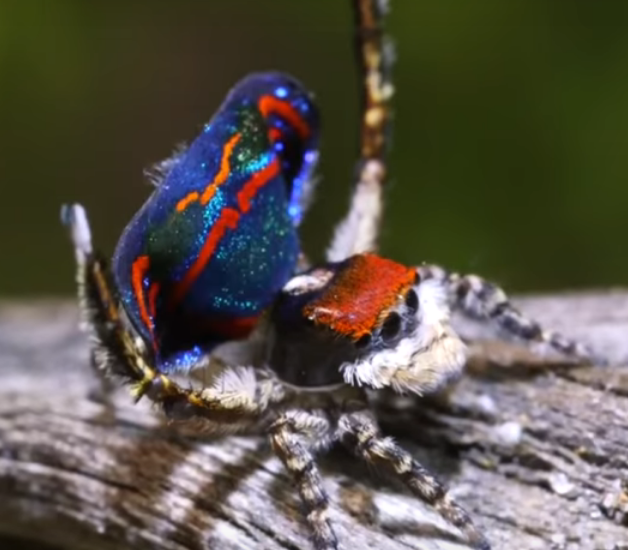
The male Australian peacock spider will probably kill all the disgust that you possess towards this species of creepy crawlies. From its dance moves to its colourful butts, everything about it is loveable and beautiful. The technique the spider uses to play with light and colours can be applied in the field of optics to enhance the technology. How these spiders arrange the fancy structural patterns in the first place has amazed scientists worldwide.
Amazingly, this creature houses a full rainbow in its tiny little posterior and wags it like a pro to attract its female partner. Scientists have termed it as "nature's smallest rainbow". The team includes researchers from the United States, Belgium, the Netherlands and Australia.
The Australian peacock spider is only 5 millimeters or 0.2 inches long. Scientists claim that the motive behind displaying the colourful posterior is to attract female spiders during courtship. Two miniature peacock spiders (Maratus robinsoni and M. chrysomelas) court females using their tiny structural scales. According to the team, the magic lies hidden in those scales.

As per the paper published in the journal Nature Communications, M. robinsoni and M. chrysomelas have two different types of abdominal scales, rainbow-iridescent scales and velvet black scales respectively. The features of the scales are different altogether.
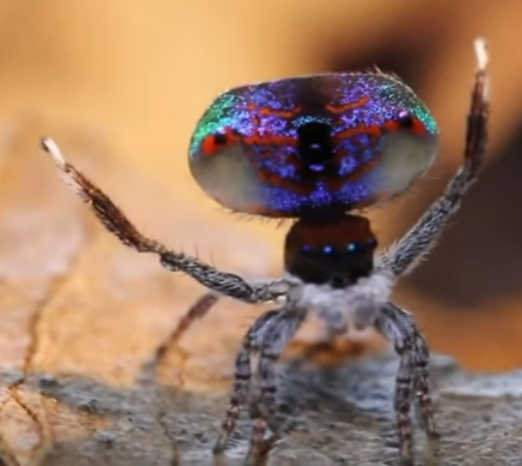
In order to thoroughly study the rainbow scales and its unique rainbow-scattering properties and arrangement, the team took aid of various imaging techniques and discovered that each of these rainbow scales are three dimensional in nature. Lights of different wavelengths and from different angles does the trick.
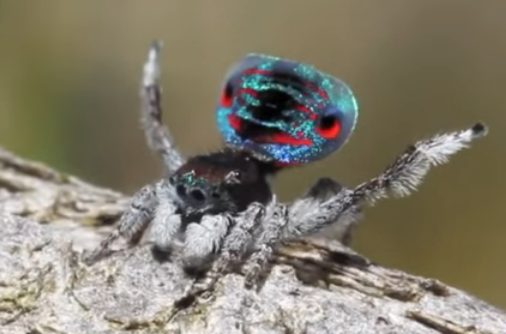
"The unique grating configuration of each M. robinsoni scale disperses the visible spectrum over a small angle, such that at short distances, the entire visible spectrum is resolved, and that a static microscopic rainbow pattern distinctly emerges," the authors wrote.
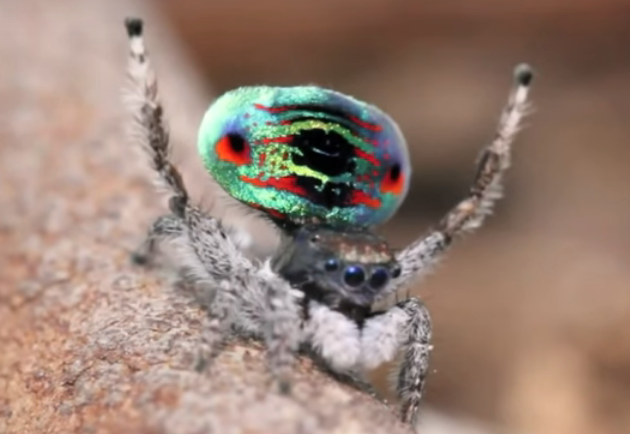
"As an engineer, what I found fascinating about these spider structural colors is how these long-evolved, complex structures can still outperform human engineering," said Radwanul Hasan Siddique, a postdoctoral scholar at Caltech and a co-author of the new research.
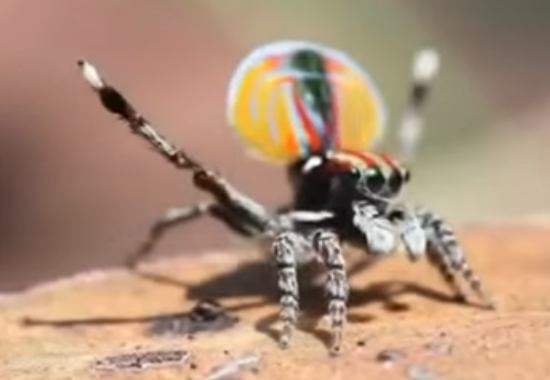
University of Akron in a statement mentioned that this technique used by the spider can be applied in the field of optics and colour technology. It can be most useful in areas where fine-scale colour resolution is required in small areas, such as in instruments used during space missions.









